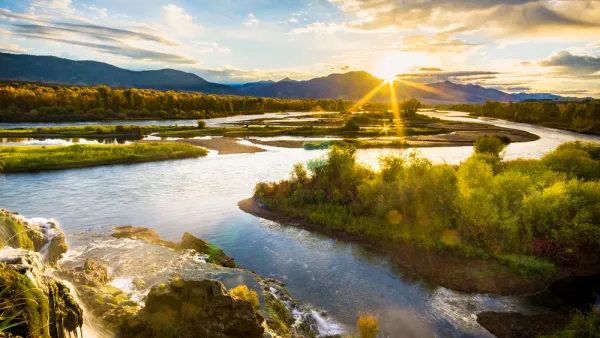Salmon can now move freely along the river and its tributaries for the first time in over a century.

The last of four dams on the Klamath River on the border between California and Oregon was demolished last week, signaling the completion of the nation’s largest-ever dam removal project.
As Rachel Ramirez explains in an article for CNN, “The removal of the four hydroelectric dams — Iron Gate Dam, Copco Dams 1 and 2, and JC Boyle Dam — allows the region’s iconic salmon population to swim freely along the Klamath River and its tributaries, which the species have not been able to do for over a century since the dams were built.”
The project is hailed as a victory for local tribal nations such as the Yurok, who have been fighting for the dams’ removal for decades. Although the dams were built to produce hydroelectric power, they only contributed 2 percent or less of PacifiCorp’s energy supply. Mark Bransom, chief executive officer of the Klamath River Renewal Corporation, says the corporation will now engage in further restoration work that includes the planting of almost 16 billion native plant seeds in the Klamath Basin.
FULL STORY: The largest dam removal project in the US is completed – a major win for Indigenous tribes

National Parks Layoffs Will Cause Communities to Lose Billions
Thousands of essential park workers were laid off this week, just before the busy spring break season.

Retro-silient?: America’s First “Eco-burb,” The Woodlands Turns 50
A master-planned community north of Houston offers lessons on green infrastructure and resilient design, but falls short of its founder’s lofty affordability and walkability goals.

Delivering for America Plan Will Downgrade Mail Service in at Least 49.5 Percent of Zip Codes
Republican and Democrat lawmakers criticize the plan for its disproportionate negative impact on rural communities.

Test News Post 1
This is a summary

Test News Headline 46
Test for the image on the front page.

Balancing Bombs and Butterflies: How the National Guard Protects a Rare Species
The National Guard at Fort Indiantown Gap uses GIS technology and land management strategies to balance military training with conservation efforts, ensuring the survival of the rare eastern regal fritillary butterfly.
Urban Design for Planners 1: Software Tools
This six-course series explores essential urban design concepts using open source software and equips planners with the tools they need to participate fully in the urban design process.
Planning for Universal Design
Learn the tools for implementing Universal Design in planning regulations.
EMC Planning Group, Inc.
Planetizen
Planetizen
Mpact (formerly Rail~Volution)
Great Falls Development Authority, Inc.
HUDs Office of Policy Development and Research
NYU Wagner Graduate School of Public Service




























